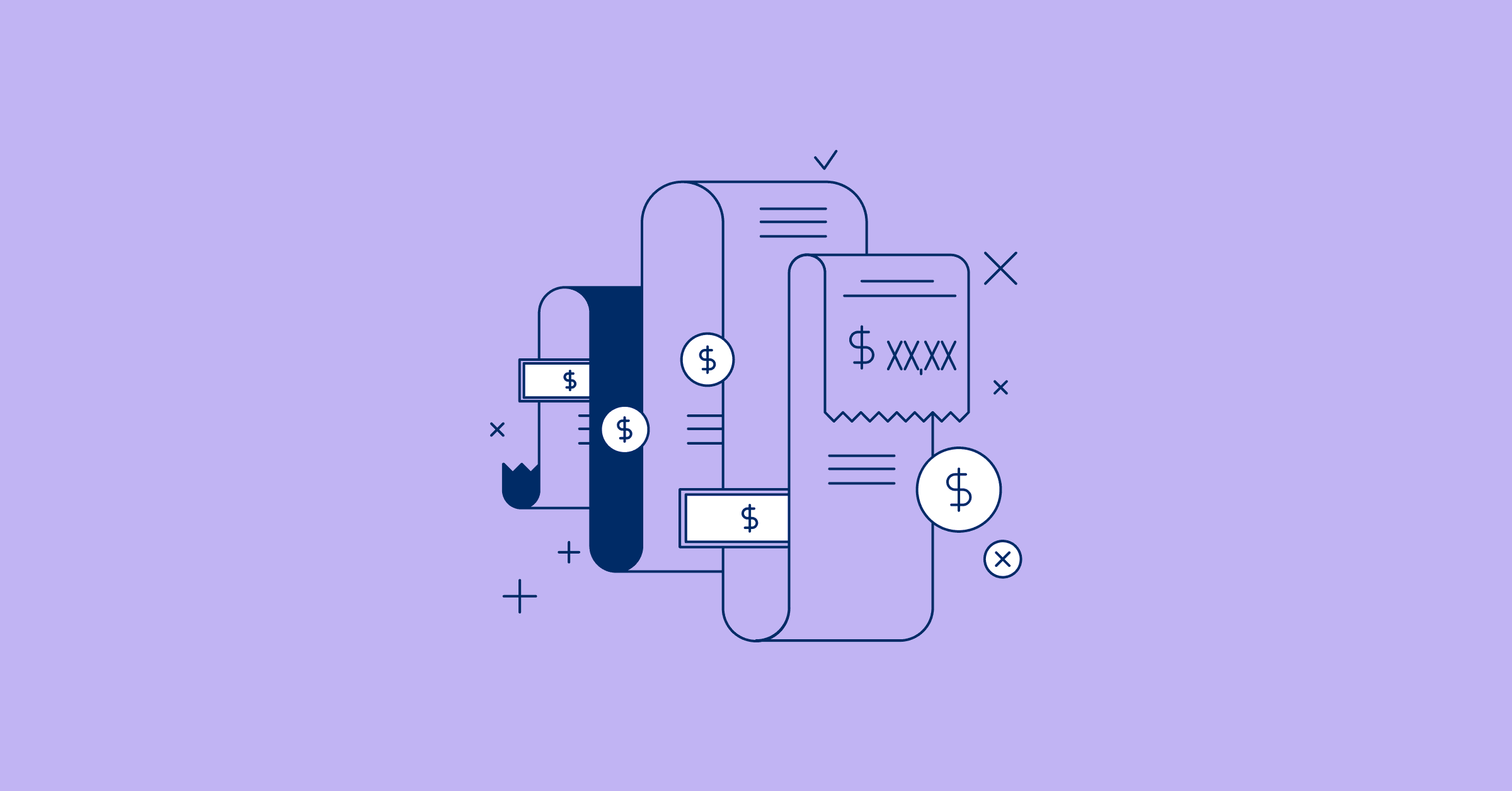November 03, 2022
10 Tips To Improve The Financial Efficiency of Your Business

Sign up for our newsletter
Stay informed with the latest trends and best practices in finance and procurement.

Financial efficiency is one of the main goals that an organization will strive to achieve and maintain. It is the measure of a business’s financial health, and obtaining financial efficiency is one of the primary ways a business can maintain operational efficiency. There are many ways to improve financial efficiency to enhance a company’s economic health while maintaining consistent growth.
This article will cover the following topics:
- What is financial efficiency?
- How to improve financial efficiency
- What is the relationship between operational and financial efficiency?
What is Financial Efficiency?
Financial efficiency describes the financial health of a business and its level of proficiency in managing the processes and systems associated with its financial affairs. Finance leaders will find it critical to continue measuring and managing their company’s financial health by observing specific metrics. After analyzing essential data, VPs of finance can make relevant analytical decisions and strategic choices to benefit the company’s level of financial efficiency.
Financial efficiency is one of the most important ways to determine the financial health of an organization. Before deciding to invest, investors will examine the financial efficiency of a company. Organizations can measure their state of financial efficiency by examining specific data elements to determine and keep track of their economic health.
How to improve financial efficiency
Getting rid of inefficiencies in a company’s financial profile is key to ensuring that a business can maximize its assets and attract investors. There are many different methods for attaining financial efficiency, and since it requires a multilayered approach, it is helpful to view it from several different angles. Making sure that all bases are covered from every aspect of a company’s economic outlook is paramount when the goal is improved financial efficiency. Below are 10 of the most effective tips for improving financial efficiency in your organization.
1. Eliminate Bottlenecks
The first tip for improving financial efficiency is to eliminate any bottlenecks that exist in the workflow. Bottlenecks are some of the main culprits for not having strong financial health. To eliminate bottlenecks, it is necessary to measure and track precisely where they occur. This can help pinpoint which areas are holding back the entire process so they can be effectively removed.
2. Craft Financial Strategies
Developing sound and effective financial strategies is one of the most effective ways to improve a company’s financial efficiency. With alterations to specific systems and processes, a business can see exponential growth where there may have been stagnation before. One such way to do this is by implementing financial technology tools. Using a financial technology platform to streamline and simplify many different processes is one effective strategy for improving a company’s overall financial health. Additional financial strategies can include:
- Adding multiple payment methods
- Diversifying currency
- Streamlining procurement, which can be achieved with the help of an effective financial technology platform.
3. Leverage Technology
Using technology to improve financial efficiency is wise for any business operating in today’s climate. In fact, according to the EY Global FinTech Adoption Index, 64% of businesses have already adopted some form of financial technology. Technology simplifies many manual processes that are naturally prone to human error. With the right technology in place, it’s possible to reduce and even eliminate mistakes that could prove to be very costly. Removing these errors will ultimately increase profitability which is essential for improving financial efficiency.
4. Standardize Processes
With so many moving parts within an organization, it’s easy to have confusion as it relates to established processes. This leads to a lack of compliance and increases the risk of error and miscommunication. One of the most effective ways to combat this is by standardizing financial processes. To properly maximize accuracy and efficiency, established and agreed-upon policies must be implemented. This ensures that there are set standards regarding how staff and partners communicate and handle workflows. Financial procurement technology can significantly assist VPs of Finance with standardizing critical processes across all departments.
5. Offering Multiple Payment Methods
Financial efficiency and profitability are restricted when only a limited number of payment methods are accepted. Offering multiple payment methods can help with ensuring that there are more opportunities for making a sale. Financial technology platforms can help maximize the payment methods a company can accept, which increases profits and enhances the overall customer experience. Customers will appreciate having multiple ways to pay. In turn, this convenience equates to much faster payment times.
6. Improve Spend Visibility & Analytics
It can be challenging to adjust the budget and control spending without having the right data and visibility. Insights gleaned from accurate spend analysis offer transparency into total company spend. With this transparency, decision-makers can work to improve financial efficiency with greater precision. In addition, improving spend visibility and analytics drives cost savings, enhances performance, and encourages contract compliance.
7. Automate Repetitive Functions
No matter if your business specializes in manufacturing, marketing, finance, or any other industry, repetitive tasks will always be essential to doing business. These manual and repetitive tasks slow down the workflow and impede the flow of the company’s systems and processes. In fact, a study showed that over 40% of staff spend a minimum of 25% of their time completing manual tasks. Some of the tasks include data entry, invoice creation, and approvals, which may be completed with the help of software. By implementing the right software, time can be freed up, thus allowing working hours to be redirected towards more profit-inducing tasks.
8. Integrate With Crucial 3rd Party Systems
Integrating existing processes with crucial 3rd party systems can prove to be instrumental in improving the financial efficiency of an organization. 3rd party systems such as financial technology platforms can provide the automation, analytics, data insight, and spend visibility needed to make massive improvements. With the help of 3rd party systems, VPs of finance can better deploy budget control protocols to control spend and increase profitability on a wide-scale basis.
9. Manage External Relationships
When considering the best ways to improve financial efficiency, it’s essential to consider the way external relationships play into overall efficiency. Whether it is the relationship with vendors and suppliers, external departments, or outside business partners, managing these relationships effectively is essential. One way to do this is by streamlining communication with a simple automated interface. Software that makes internal and external communication seamless can improve a business’s financial efficiency.
10. Implement Employee-level limits and controls
A company’s budget can often be exceeded without proper protocols for placing orders, adding subscriptions, and other spend limits. This, unfortunately, is to the detriment of financial efficiency goals. When it comes to improving financial efficiency, it is critical to implement employee-level limits and controls. This is made easier and more accessible through the use of financial technology that allows an organization to establish and implement measures for directing company spend.
The Relationship Between Operational & Financial Efficiency
Comparing the relationship between operational and financial efficiency can be helpful when looking at a company’s overall health. These two concepts are intrinsically connected and interrelated. Without a robust financial profile, companies will struggle to maintain operational efficiency and vice versa. With greater operational efficiency, businesses can be more profitable due to being able to produce higher quality products and services for less time and money. This provides greater returns at a much-reduced cost. When fees and costs are reduced, financial efficiency is increased.
Improve Financial & Operational Efficiency With Integrations
Integrations can assist in improving both operational and financial efficiency. One such solution is PayEm, a leading financial technology software that allows for the integration of disparate processes and systems.
Additional Benefits of PayEm For Financial Efficiency Include:
- Capture invoices and requests automatically
- Create bills, schedule, and send payments
- Global financial platform management with multiple currencies
- Auto categorizes and syncs with ERP software
- Issue virtual or physical cards to better manage payments and stay on budget
- Designate limits and set rules directly within the platform
- Automated approval flows for greater visibility and control
With one cohesive solution, organizations can enhance communication, improve data sharing, gain greater visibility into processes, and enhance their workflows and systems. This equates to greater operational efficiency and financial efficiency in the long term. Contact PayEm’s experts for a commitment-free, no-cost demo of the platform.


